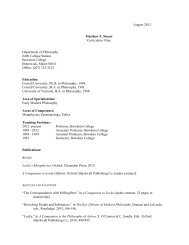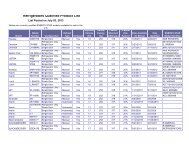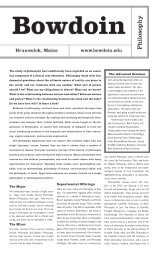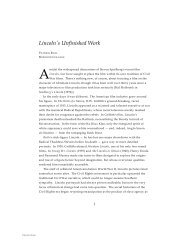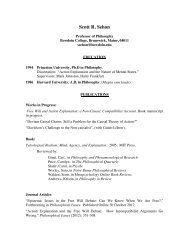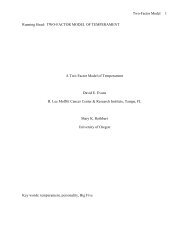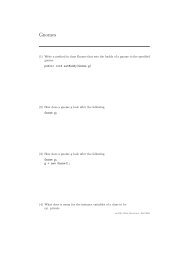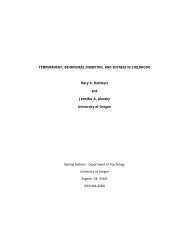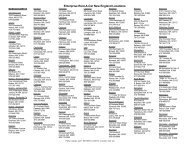Create successful ePaper yourself
Turn your PDF publications into a flip-book with our unique Google optimized e-Paper software.
Quantitative Analysis with SEC factors --Hans Dijkstra<br />
For microanalysis the composition of a sample can be calculated from the measured X-ray<br />
intensities using:<br />
Meas<br />
W Z A F I<br />
% = • • •<br />
I<br />
Where Z, A and F are the matrix correction parameters, describing the atomic number effect<br />
(stopping power and backscatter effect), the absorption effect, and the fluorescence effect.<br />
Since for standardless analysis we have no Ι STD available, <strong>EDAX</strong> has chosen to use calculated<br />
standards, with in a simplified form:<br />
N<br />
I n p f<br />
A R<br />
Q E<br />
dE d s dE<br />
0 E j<br />
Std Ω<br />
j ( )<br />
Calculated = εεεε dωωωω j jl ( χχχχ)<br />
����<br />
4ππππ<br />
E / ( ρρρρ )<br />
0<br />
Where n is the number of electrons entering the sample, Ω/4π is the solid angle, ε is the detector<br />
efficiency, ω is the X-ray fluorescence yield, p is the relative probability for the transition involved,<br />
f(x) is the absorption correction, and the integral represents the cross-section of the ionization<br />
involved. Since n is unknown, and thus set to 1, the calculated intensity might be in a totally<br />
different order of magnitude as the measured intensity. Normalizing the W% to 100% solves this<br />
problem.<br />
This function seems to work rather accurate, but it is important to notice that some factors are left<br />
out of the calculations, like the solid angle, since this is a constant factor and this equation is only<br />
used for standardless analysis, i.e. the results are normalized to 100% anyway.<br />
One disadvantage of this equation is that εd, the detector efficiency, can not be predicted with<br />
sufficient accuracy for X-ray lines below 1 keV. Small variations in detector quality (Si dead layer,<br />
etc.) can cause variations in measured intensity. Therefore <strong>EDAX</strong> has introduced the SEC factors.<br />
The final equation now becomes:<br />
I<br />
W% = Z • A•F •<br />
SEC •<br />
I<br />
The SEC factors can simply be calculated by entering a compound standard, and calculate the SEC<br />
from the given W% (thus the ZAF factors and the standard intensity can be calculated) and the<br />
measured intensities. Also in this procedure calculated SEC factors may be off by an order of<br />
magnitude, and now this is solved by assuming one SEC factor to be identical to a default value<br />
(thus keeping it fixed), and scaling other SEC factors relative to the fixed one.<br />
________________________________________________________________________<br />
<strong>EDAX</strong> Training Course –Quantitative Analysis with SEC Factors - page 1<br />
Meas<br />
Std<br />
Std<br />
Calculated




